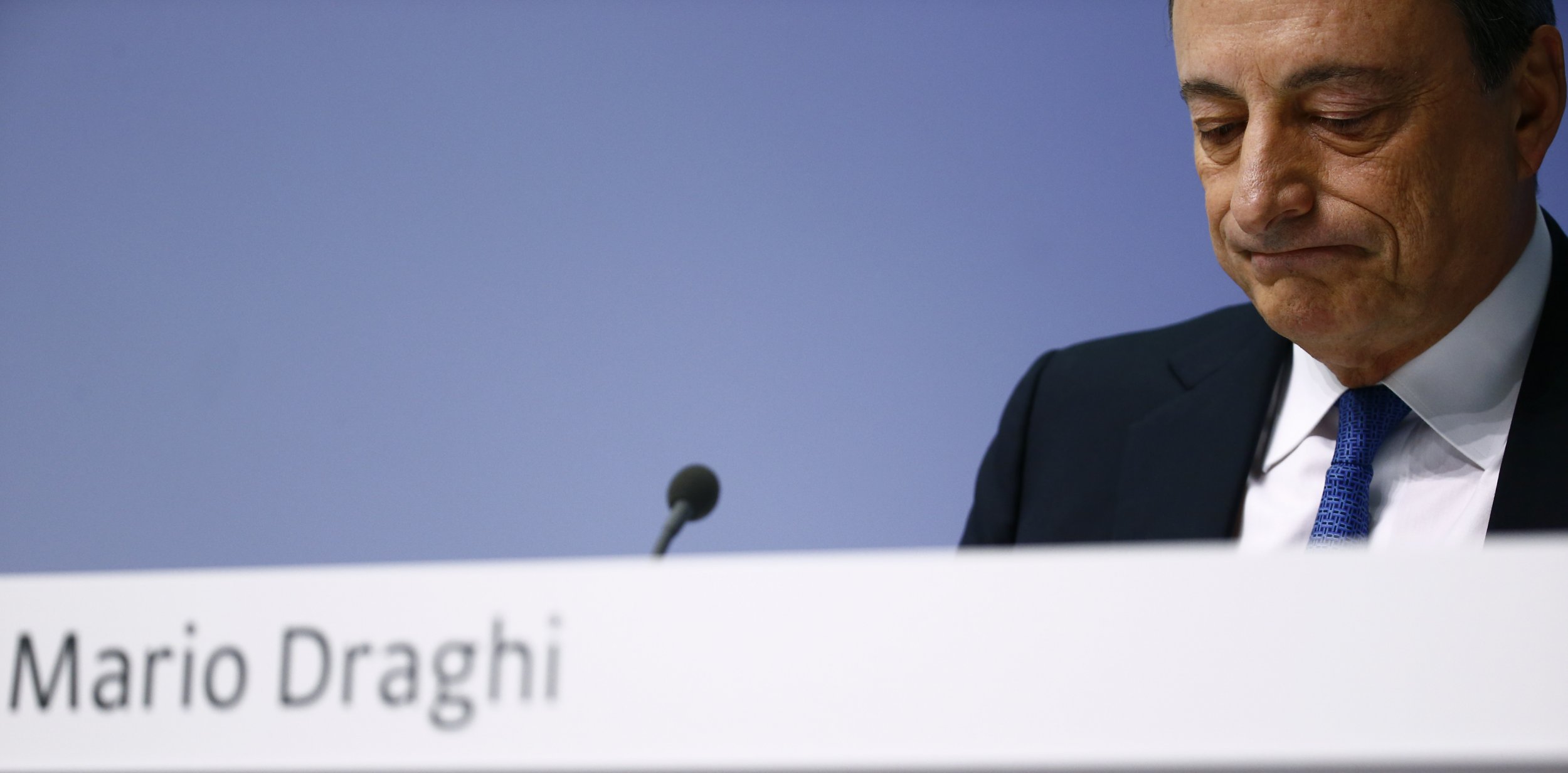
It's official: The eurozone will have its dose of medicine.
The European Central Bank (ECB) has announced that a programme of quantitative easing (QE), totalling some €1.1 trillion ($1.24 trillion), will begin in March 2015 and run until June 2016. The ECB regards QE as a necessary evil to fend off deflationary pressures in the eurozone—in December alone, consumer prices in the 19 countries that use the common currency dropped by 0.2 per cent.
It is, however, a highly controversial measure—only financial markets are at ease with it and have already priced it in. That had not been the case, and there were no political issues around the central banks' stance, when the U.S. Federal Reserve and the Bank of England, in the throes of the global financial crisis, embraced QE to overcome the constraint of zero-interest rates. Even the reaction to the Bank of Japan's more recent program of quantitative and qualitative easing has been, in comparison, much more muted.
But the ECB is the last guest to arrive at the party, and the scene has changed in the meantime. After the global financial crisis, the once-unconventional tools of QE—mainly buying assets in private markets—have become the new normal in the hands of the main central banks. The world is already swamped with liquidity and also more aware of the negative side effects of QE, for instance, on the currencies of some developing countries.
QE is a high-risk strategy to anchor inflation expectations. A central bank needs to be prepared to buy as many securities as is necessary. In the case of the ECB, the amount committed to QE is larger than expected, but it will be buying only 20 percent of sovereign bonds—the rest will be bought by national central banks.
Of course, politics plays a big part in the implementation of unconventional monetary policy in the eurozone.
ECB President Mario Draghi's doctrine of "whatever it takes" goes only so far as Germany allows it. The German members of the ECB have been very clear that QE goes against Berlin's conviction and policy stance. To keep Germany on board, therefore, the ECB has put a stop to the mutualization of debt—that is, buying bonds issued by all eurozone countries, even those with large public debt. The risk, however, is that this will create more fragmentation in Europe's monetary policy and exacerbate the existing gap between core countries and the periphery.
Besides the impact on the eurozone itself, QE is likely to produce some adverse spillovers in other countries, in particular through the exchange-rate channel. One notable innocent bystander so far has been Switzerland—though there may not be much sympathy for the bankers in Bern.
Foreseeing large capital inflows as a result of the eurozone QE, the Swiss National Bank (SNB) braced itself early and on January 15 announced the abandonment of the unilateral cap, in force since September 2011, on the value of the Swiss franc against the euro. The result was dramatic: The franc rose by 40 percent against the euro.
But there will be some significant risks down the road for Switzerland, in particular the worsening of deflationary pressures and exposure to considerable losses on its reserves. However, the drastic move to uncap the franc will probably spare the SNB from some spillovers from the eurozone QE, notably a further expansion of its balance sheet—i.e. printing money—and of its official reserves. Switzerland's foreign exchange holdings (currently the equivalent, in total, of 480 billion francs, or $537 billion) expanded tenfold since the burst of the global financial crisis in 2008 and are now among the highest, per capita, in the world.
What will the eurozone gain as a result of the latest moves? At best, QE will help assuage some deflationary fears and provide some oxygen to the peripheral countries by keeping under control the costs of serving their public debt.
But it is unlikely that QE will make a significant difference in terms of economic growth. The expected impact on GDP across the eurozone will be, at best, marginal, especially in the periphery.
Unlike in the United States and Britain, where purchases of financial assets financed by central bank money increased liquidity and pushed up asset prices—thus stimulating expenditure by increasing wealth and lowering borrowing costs for households and companies—in the eurozone this transmission mechanism is not as powerful.
Securities markets are comparatively smaller, and wealth effects are thus, too. In addition, European banks are now more risk-averse than they were before the crisis, so QE is unlikely to boost bank lending (unlike in the United States, where it has grown 3 percent a year for three years).
The only area where QE might provide some stimulus to the eurozone economy is through the exchange-rate channel—by weakening the euro against the dollar. To the extent that central bank liquidity is used to purchase foreign assets, it will drive down the exchange rate and stimulate exports—which in turn will boost corporate earnings and, ultimately, investment.
If, in addition, QE induces foreign investors to sell their sovereign holdings in eurozone countries and convert the proceeds in other currencies, it should drive the euro down further and thus reinforce the exchange-rate channel.
But it seems that the ECB is going through a lot of pain for not much gain. So why bother? In the end, because there are no other options. Quantitative easing is the only tool left available, with fiscal policies seriously constrained because of the need to reduce the deficit.
And trends confirm the urgency: With sluggish demand, large debt stock and deleveraging still in progress, deflation remains a serious threat that could push the eurozone (or some part of it) into a dreaded "liquidity trap"—when people postpone consumption on the expectation that prices will be lower in the future.
One need only look to Japan's two "lost decades" for an example of what might then come.
In the end, QE is a way to gain time and allow countries, especially those in the periphery, to go through adjustments and reforms. But it alone is not the answer: QE is a second-best solution—good enough to keep Germany on board and to please the markets, but not incisive enough to make a real difference.
Dr. Paola Subacchi is Research Director, International Economics at Chatham House, the Royal Institution of International Affairs. This article first appeared on the Chatham House website.
Uncommon Knowledge
Newsweek is committed to challenging conventional wisdom and finding connections in the search for common ground.
Newsweek is committed to challenging conventional wisdom and finding connections in the search for common ground.
About the writer
To read how Newsweek uses AI as a newsroom tool, Click here.






